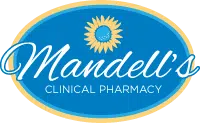Biology of Fertility Medications
Follicle Stimulating Hormone (FSH)
This naturally occurring gonadotropin that is released by the pituitary gland during the follicular phase of the menstrual cycle. It is one of two essential hormones that stimulates follicular development and the formation of oocytes (or eggs) in the ovaries. There are two commercially available FSH medications – Follistim and Gonal-F, which are manufactured using recombinant DNA technology. Physicians use these products interchangeably in the vast majority of stimulation cycles.
Luteinizing Hormone (LH)
Luteinizing hormone is the other naturally occurring gonadotropin that is released by the pituitary gland during the menstrual cycle. Like FSH, it stimulates follicular and oocyte development in the ovaries. There is only one commercially available product, Menopur, that emulates the effects of luteinizing hormone. Menopur is highly purified hMG (human menopausal gonadotropin) manufactured using both LH and HCG (human chorionic gonadotropin). While it does not function the same way in the natural menstrual cycle, HCG has been proven to behave much like LH in it’s ability to stimulate oocyte development. As a result, some physicians utilize small doses of HCG to emulate LH during a stimulation cycle. At this time, there is no commercially available preparation of “low dose” HCG, so it therefore must be compounded by the pharmacy.
Human Chorionic Gonadotropin (HCG)
Human chorionic gonadotropin is a naturally occurring hormone that is present in pregnant women. It has been shown that HCG acts the same as LH in the body, and has a substantially longer half-life. In a natural menstrual cycle, ovulation is triggered by a surge in LH that occurs at the very end of the follicular phase. In order to emulate this effect, physicians use HCG at the appropriate time at the end of a stimulation cycle, to bring about the final maturation of the oocytes developing in the ovaries. Pregnyl, Novarel and generic HCG are purified human-derived HCG products that are commercially available and are commonly used to “trigger” patients at the end of their stimulation cycles. Ovidrel is the only recombinant HCG product available in the U.S. market.
GnRH Analogues
In natural menstrual cycles and controlled ovarian stimulation cycles alike, the body has natural feedback mechanisms that react to hormone levels in the body and signal the ovaries to ovulate, or expel a mature egg or eggs. In a natural menstrual cycle, the body relies on this mechanism as a key step towards achieving pregnancy. However, controlled ovarian stimulation is marked by higher hormone levels that, if left uncontrolled, could bring about premature ovulation. As a result, physicians employ GnRH analogues to essentially withhold ovulation until the right time during treatment. There are two commercially available GnRH antagonist products, called Ganirelix and Cetrotide, achieve this result by blocking the body’s natural FSH and LH, and preventing ovulation in this way. Leuprolide Acetate (brand name Lupron) is a commercially available GnRH agonist that prevents ovulation by overstimulating the pituitary gland and essentially, shutting it down from producing natural FSH and LH. When the natural ovulation process is shut down or blocked, the physician can have complete control of the patient’s cycle.
Other stimulation medications:
- Clomiphene Citrate
- Letrozole
- Oral Contraceptives
